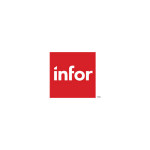The goal of every health system is to deliver the best possible care to patients. However, that objective can be difficult to achieve, especially for federal health providers. Their populations are among the largest that require care. What’s more, immense patient populations aren’t the only challenge. Mounting healthcare costs, disruptive technologies and inefficient processes all compound the difficulties providers face in promoting individual health in a complex care environment.
Providers in both the private and public sectors, however, are learning to overcome these challenges with new tactics. Healthcare leaders are building patient-centered supply chains, optimizing their nursing workforce and creating interoperable health IT data to improve patient care. What’s more, health systems are able to achieve those goals without raising costs to providers or patients. How?
Beth Meyers, Chief Nurse Executive, and Joel Rydbeck, Director of Healthcare Technology and Strategy at Infor, sat down to discuss tactics for federal agencies to consider with GovLoop. They said the answer lies in applying an integrated suite of tools that makes the most of the existing data, processes and systems of individual healthcare organizations. Rather than applying one-size-fits-all solutions, providers are creating unique care plans and processes that manage health and budgets simultaneously. They’re doing so by deploying smart applications on top of their own resources.
Infor provides a host of business applications to make that possible. In this industry perspective, we’ll explain what specific challenges create the need for healthcare providers to transform the way they do business. Then, we’ll explain how integrated technology can meet those demands and ultimately help healthcare systems deliver better patient care.







